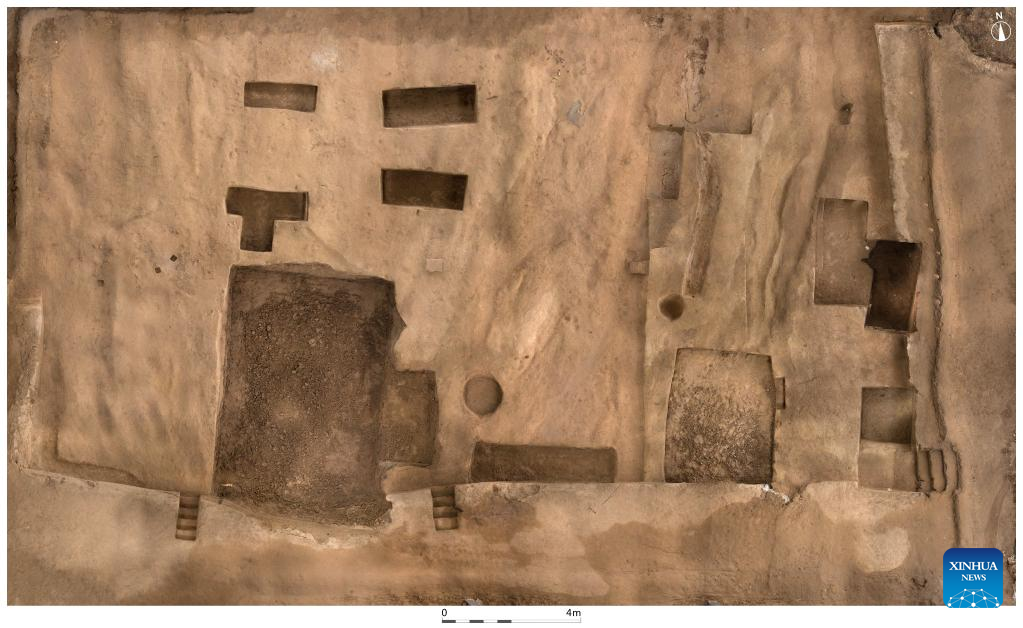Prehistoric ruins discovered in east China

This undated aerial photo shows a scene of an ancient hominid site in Zhaojiaxuyao Village of Zibo City, east China's Shandong Province. (Shandong provincial cultural relics and archaeology research institute/Handout via Xinhua)
JINAN, Jan. 7 (Xinhua) -- An ancient hominid site dating back some 13,200 years ago has been unveiled in east China's Shandong Province, with over 1,000 relics, including pottery sculptures.
The site is in Zhaojiaxuyao Village of Zibo City and existed around the transition period between the Palaeolithic Age and the Neolithic Age.
Its core area covers about 400 square meters. Most of the unearthed relics were animal bones, pottery shreds, and pottery sculptures, while some stoneware and clamshell products were also found at the site.

This undated photo shows pottery shreds unearthed from an ancient hominid site in Zhaojiaxuyao Village of Zibo City, east China's Shandong Province. (Shandong provincial cultural relics and archaeology research institute/Handout via Xinhua)
"We can see that the pottery-making techniques had become relatively mature at that time, and the relics are the hitherto earliest potteries discovered in Shandong," said Zhao Yichao with the provincial cultural relics and archaeology research institute.
"Some deer and bird bones bear cut marks, which indicates that the ancient hominid's meat consumption centered on birds and deer," Zhao added.
The discovery has helped fill the gap of prehistoric human ruins in the region, providing key evidence for the significant transition from the Palaeolithic Age to the Neolithic Age in northern China, especially the Shandong region. It is also of great value to further study the social organization form and production models at that time.
Photos
Related Stories
- Water conservancy ruins found in ancient capital in central China
- New marine reptile fossil found in China's Yunnan
- Hundreds of 4,500-yr-old tombs found in central China
- Pic story of post-90s archaeologist in central China
- Traces of human activity dating back 20,000 years found in east China
- Thirty-five Tang Dynasty tombs excavated in east China
Copyright © 2023 People's Daily Online. All Rights Reserved.









